A Look at the Latest Research in Fundamental Physics
The deepest questions about reality and our cosmos remain as great as ever, and that opens a tremendous opportunity for graduate students to engage in the cutting-edge, meaningful research.
High profile research of today is exploring questions about dark matter, dark energy, gravity, origin of the observed matter, the nature of time, the paucity of antimatter in the universe, and many-many more.
SMU and Cutting-Edge Research Activity
SMU physicists are active in studying the origin of mass, mapping the properties of elusive and mysterious neutrinos, looking for the source of dark matter, studying the origin and expansion of the universe, and crafting a powerful and consistent theoretical framework to explain the fundamental laws of the universe.
The work taking place at SMU can be divided into two general categories.
1. High Energy Physics (HEP)
The SMU High Energy Particle Physics group studies the properties of the most fundamental constituents of matter and the laws governing their behavior. Some of the most important questions today concern the origin of elementary particle masses and the difference between matter and anti-matter in the universe. Several large accelerator-based experiments address these questions. SMU scientists played the key role in the groundbreaking discovery of the Higgs boson, the fundamental particle that explains existence of stable atoms. This renowned discovery received the Nobel Prize in Physics in 2013.
SMU physicists work on the ATLAS experiment at the Large Hadron Collider at CERN in Geneva, Switzerland (pictured left) and on the D0 and NOνA experiments based at the Fermi National Accelerator Laboratory in Batavia, Illinois (pictured right). All of these areas touch on leading questions that challenge modern physics.
2. Cosmology and Astrophysics
The SMU Cosmology and Astrophysics group is involved in searching for answers to some of the biggest puzzles in physics today: What is the nature of dark matter? What is driving the accelerated expansion of the universe? What happened in the earliest moments of the universe?
SMU physicists work deep underground in SNOLAB in Sudbury, Canada looking for evidence of dark matter particles (pictured left), or on top of mountains at McDonald Observatory (pictured middle) and Kitt Peak National Observatory, observing the universe's expansion (pictured right). They also carry out theoretical calculations to study what the cosmic microwave background radiation (the "afterglow of the big bang") can teach us about the contents, history, and evolution of the universe.
Advanced methods for data analysis and machine learning
SMU physicists in both experimental and theoretical groups also work with various aspects of large-scale data analysis, including multivariate statistics and machine learning. The SMU experimentalists use advanced methods for statistical analysis and pattern recognition to look for production of rare particles, such as pairs of Higgs bosons. The key objective of the theoretical effort at SMU is to construct detailed models of the inner structure of protons and nuclei using diverse data from world experiments. Working with high-performance computers at SMU and CERN, among other places, allows the SMU physicists to extract relevant information from the complicated multi-parameter data they receive.


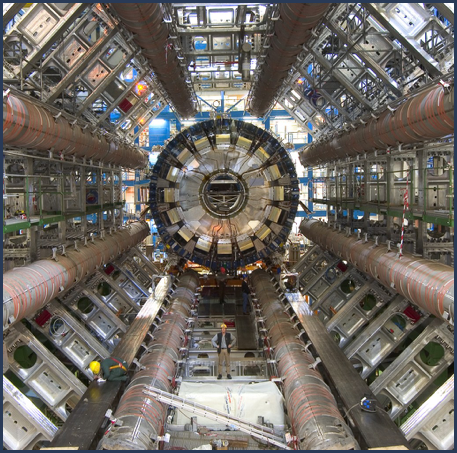
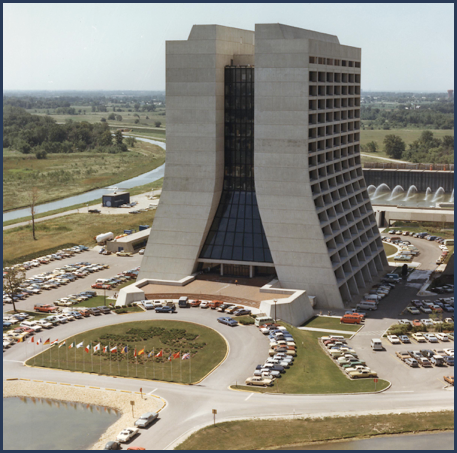
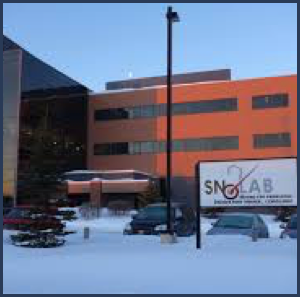

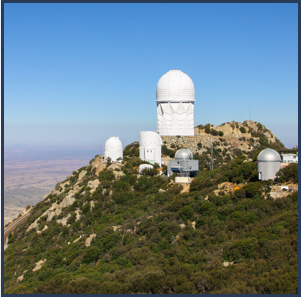
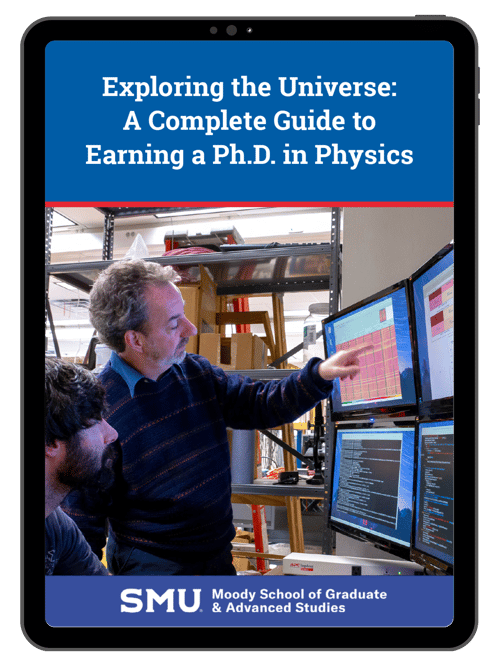
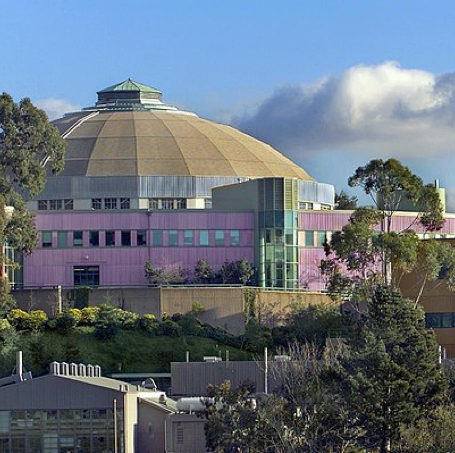
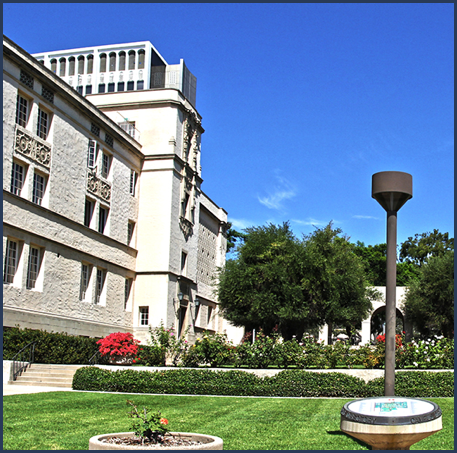



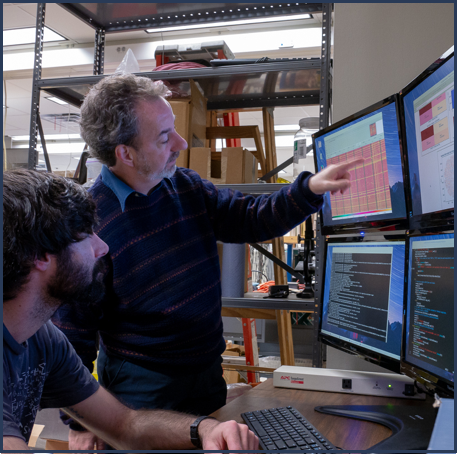


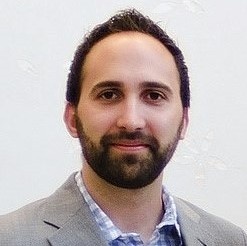

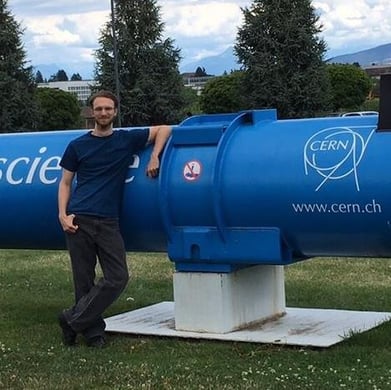
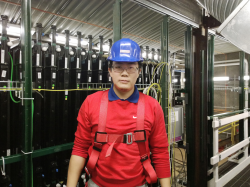 Ph.D. student B. Wang works on maintaining the Near Detector of the NOvA neutrino oscillation experiment at Fermilab. He earned his degree in 2017 studying novel properties of the neutrino.
Ph.D. student B. Wang works on maintaining the Near Detector of the NOvA neutrino oscillation experiment at Fermilab. He earned his degree in 2017 studying novel properties of the neutrino.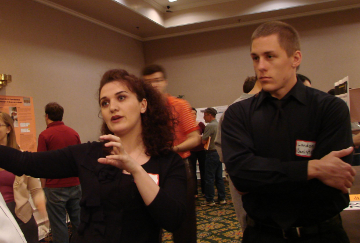 M.S. student B. Ferdousi (left) explains her research on dark matter with Physics Major L. Banister (right) at the Dedman College Research Fair. Ferdousi continued on after SMU to a Ph.D. program in space sciences, earning her degree in 2017.
M.S. student B. Ferdousi (left) explains her research on dark matter with Physics Major L. Banister (right) at the Dedman College Research Fair. Ferdousi continued on after SMU to a Ph.D. program in space sciences, earning her degree in 2017.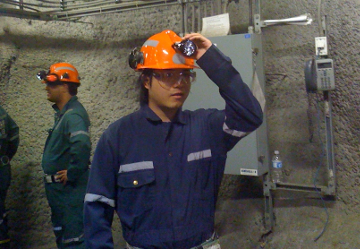 Ph.D. student H. Qiu is dressed for the hunt for dark matter on a visit to the Sudbury Mine in Canada. He earned his Ph.D. on the first SuperCDMS-Soudan data.
Ph.D. student H. Qiu is dressed for the hunt for dark matter on a visit to the Sudbury Mine in Canada. He earned his Ph.D. on the first SuperCDMS-Soudan data.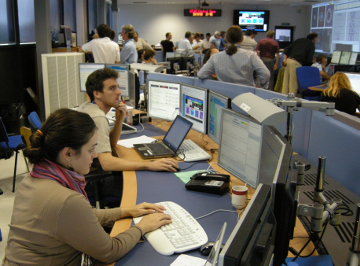 Ph.D. student R. Daya on shift for the Liquid Argon Calorimeter detector, part of the ATLAS Detector, in the ATLAS control center. Daya went on to a post-doctoral position in the field on ATLAS and is now a Research Lead/Data Scientist at spotify.
Ph.D. student R. Daya on shift for the Liquid Argon Calorimeter detector, part of the ATLAS Detector, in the ATLAS control center. Daya went on to a post-doctoral position in the field on ATLAS and is now a Research Lead/Data Scientist at spotify. Ph.D. student Y. Ilchenko presents his work on monitoring the data quality of the ATLAS Experiment. Ilchenko went on to a post-doctoral position in the field on ATLAS.
Ph.D. student Y. Ilchenko presents his work on monitoring the data quality of the ATLAS Experiment. Ilchenko went on to a post-doctoral position in the field on ATLAS.



